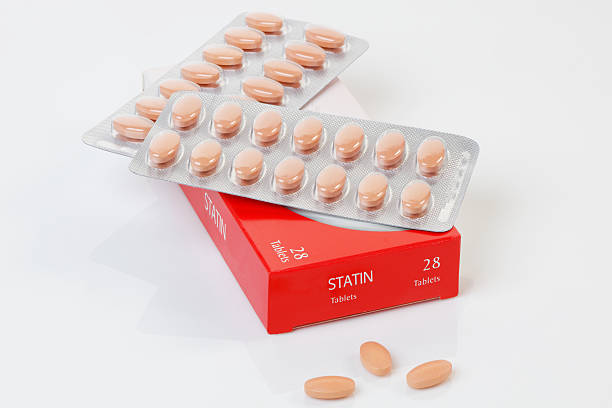Glowing skin isn’t just about serums, cleansers, or creams. The most radiant complexions often start not with what you put on your skin, but with what you put into your body. Behind every smooth, glowing face is often a well-balanced plate full of colorful, nutrient-rich foods. Nutrition is the original skincare—and perhaps the most effective one at that.
Your skin is your body’s largest organ, and it thrives on the nutrients you feed it. Just like a plant perks up after a drink of water and sunlight, your skin flourishes when it gets the right combination of vitamins, minerals, antioxidants, and healthy fats. When your diet is clean and supportive, your skin reflects that health in the form of elasticity, softness, and that much-coveted glow.
Modern science has confirmed what traditional medicine has long believed: food and skin health are intimately connected. Whether it’s reducing acne, preventing premature aging, or simply boosting radiance, what you eat plays a central role. And thankfully, achieving glowing skin doesn’t require exotic ingredients or impossible diets. Often, the best foods for skin are those found in your everyday kitchen.
The Skin-Food Connection: What Really Happens Inside
Before diving into the tastiest skin-enhancing foods, it’s worth understanding how food actually affects your skin. The skin is constantly renewing itself, with new cells replacing old ones about every 28 days. This renewal process requires a steady supply of nutrients—think of it as the raw materials needed for skin construction.
Antioxidants help protect your skin from oxidative stress, which can damage cells and speed up aging. Healthy fats like omega-3s maintain the skin’s moisture barrier and keep it supple. Proteins are essential for collagen production, which provides structure and elasticity. Vitamins like A, C, and E act as the skin’s repair crew, healing wounds and preventing inflammation. Minerals like zinc support immune function, which can reduce breakouts and sensitivity.
What’s even more fascinating is how the gut and skin communicate. Known as the gut-skin axis, this relationship highlights how gut health can influence inflammation, oil production, and even how hydrated your skin feels. This means that glowing skin is not just about eating specific foods, but also about maintaining a healthy digestive system to absorb and use those nutrients effectively.
Hydration Heroes: Water-Rich Foods That Quench Your Skin
When you think of hydration, your first thought may be drinking water—and rightly so. But did you know that some foods are made up of over 90% water? These hydrating heroes not only quench your thirst but also help keep your skin plump, elastic, and vibrant.
Cucumbers are perhaps the ultimate water-rich snack. Crunchy, refreshing, and nearly 96% water, they are like a mini internal face mist. They contain silica, a mineral that supports skin elasticity and firmness. Another champion of hydration is watermelon. Packed with water and lycopene, a powerful antioxidant, watermelon helps reduce redness and prevent UV damage. Celery, lettuce, and zucchini are also fantastic hydrating veggies, sneaking water into your diet with each bite.
Fruits like oranges, strawberries, and cantaloupes not only hydrate but also deliver a punch of vitamin C, which supports collagen production and fights inflammation. The benefit of water-rich foods isn’t just in moisture retention—it’s also in detoxification. These foods help flush out toxins, reduce puffiness, and encourage a fresh, luminous glow from the inside out.
Glow-Giving Fats: The Right Oils for Radiant Skin
One of the most misunderstood aspects of skincare nutrition is fat. For years, people were told to fear fat, to cut it from their diets in the pursuit of health and beauty. But in truth, the right fats are crucial for skin health. They help form the lipid barrier that protects your skin from environmental stressors and prevents dryness, flaking, and irritation.
Avocados are a superstar in this category. Creamy, rich, and delicious, they are loaded with monounsaturated fats that keep skin moisturized from within. They also contain vitamin E, which acts as a powerful antioxidant that reduces inflammation and repairs damage caused by UV exposure.
Nuts, especially almonds and walnuts, are another skin-friendly fat source. Almonds are high in vitamin E, while walnuts provide omega-3 fatty acids—essential fats that your body cannot produce on its own. Omega-3s help calm inflammation, which can reduce acne and redness, and they also keep your skin smooth and flexible.
Seeds like chia and flaxseed offer a plant-based source of these same omega-3s. They also contain fiber, which promotes healthy digestion and supports the gut-skin connection. If your skin has been looking dull or flaky, incorporating these healthy fats might just be the missing link to your glow-up.
Color Your Plate: Antioxidants and the Beauty Rainbow
If there’s one piece of advice every dermatologist agrees on, it’s this: eat the rainbow. Why? Because colorful fruits and vegetables are full of antioxidants—compounds that fight oxidative stress and prevent premature aging. Each color brings its own set of skin-enhancing nutrients, and together, they work synergistically to promote clarity, brightness, and resilience.
Berries like blueberries, raspberries, and blackberries are loaded with anthocyanins and vitamin C. These compounds strengthen collagen, reduce fine lines, and even out your complexion. Carrots and sweet potatoes are bursting with beta-carotene, which your body converts into vitamin A—a nutrient critical for skin cell turnover and repair.
Leafy greens such as spinach and kale provide a wealth of vitamins A, C, and K, as well as folate and iron. These nutrients help with wound healing, reduce dark circles, and support a more even skin tone. Tomatoes bring lycopene into the picture, another antioxidant known for reducing sun damage and inflammation.
Even red and yellow peppers, rich in vitamin C and carotenoids, play a role in protecting your skin and boosting collagen synthesis. The key is diversity—no single fruit or vegetable can do it all, but together, they form a powerful shield against dull, tired skin.
Protein Power: Building Blocks for Healthy Skin
While antioxidants and fats get a lot of the skincare spotlight, protein is often the unsung hero of skin nutrition. Your skin is made up of proteins like collagen and elastin, which give it structure, firmness, and elasticity. Without enough protein in your diet, your skin may become weaker, thinner, and slower to repair itself.
Eggs are an excellent source of high-quality protein and contain biotin, a B-vitamin that plays a crucial role in maintaining skin health. Greek yogurt is not only rich in protein but also offers probiotics, which support gut health and, by extension, skin clarity.
Fish, particularly fatty fish like salmon, mackerel, and sardines, provide both protein and omega-3 fatty acids, making them a double win for your skin. The protein helps repair tissue and regenerate cells, while the omega-3s reduce inflammation and keep the skin barrier strong.
For plant-based eaters, lentils, chickpeas, tofu, and tempeh are all excellent protein sources that support collagen production and overall skin resilience. Don’t forget that protein isn’t just about muscles—it’s the framework your skin depends on to stay firm and glowing.
Gut Check: Fermented Foods for Skin Harmony
You might not immediately link gut health to glowing skin, but the connection is strong and scientifically backed. The gut is home to trillions of bacteria that influence digestion, immune function, and inflammation levels. An imbalanced gut microbiome can lead to skin issues like acne, eczema, rosacea, and dullness.
Fermented foods are packed with probiotics—live beneficial bacteria that support a healthy gut environment. When your gut is balanced, your body is better able to absorb nutrients, manage inflammation, and eliminate toxins. All of these factors contribute to clearer, more radiant skin.
Kimchi, sauerkraut, miso, and tempeh are flavorful, probiotic-rich foods that can spice up your meals while supporting your skin. Yogurt and kefir offer similar benefits with a creamy, tangy twist. For those who enjoy beverages, kombucha is a fizzy fermented tea that delivers both probiotics and antioxidants.
Incorporating these foods into your diet can improve not only digestion but also your skin’s appearance. Many people notice fewer breakouts, less redness, and a more even tone after just a few weeks of gut-friendly eating.
Super Spices: Small Ingredients with Big Impact
Sometimes, the tiniest ingredients pack the most powerful punch. Spices and herbs, often overlooked in skin nutrition, are rich in anti-inflammatory and antioxidant compounds that can transform your complexion from the inside out.
Turmeric is perhaps the most famous in this category. Its active compound, curcumin, is a potent anti-inflammatory that can help reduce redness, puffiness, and even acne. Black pepper enhances turmeric’s absorption, so they’re often best used together.
Cinnamon improves blood circulation, which can lead to a healthier glow. Ginger aids digestion and has antimicrobial properties that benefit both gut and skin health. Even parsley, cilantro, and mint offer detoxifying benefits and a dose of skin-loving chlorophyll.
The best part about spices is how easy they are to include in your daily routine. Sprinkle them on oatmeal, stir them into soups, blend them into smoothies, or brew them into teas. A little bit goes a long way toward nourishing your skin from within.
Sweet Skin Treats: Natural Sugars That Help, Not Hurt
When it comes to sugar and skin, it’s often a cautionary tale. Processed sugars can spike insulin levels, increase inflammation, and contribute to collagen breakdown, leading to premature aging. But not all sugars are villains. In fact, certain naturally sweet foods can actually support your skin’s radiance—when consumed in moderation and in their whole form.
Fruits like mangoes and papayas are naturally sweet and rich in vitamins A and C, both of which are skin superstars. Mangoes, in particular, contain enzymes that aid in digestion and help regulate oil production, reducing the chances of breakouts. Papayas offer a natural source of papain, an enzyme known for its exfoliating properties—internally and externally.
Bananas are another skin-friendly sweet treat. High in potassium and vitamin B6, they help maintain hydration and support cell regeneration. Dates and figs, while sweet and sticky, are rich in fiber and antioxidants. They provide natural energy while also delivering minerals that contribute to smoother skin.
When your sweet tooth calls, opting for fruit-based treats instead of processed snacks is a delicious way to protect and enhance your glow. And when paired with a protein or healthy fat—think banana with peanut butter or dates with almonds—you get a balanced snack that supports skin from all angles.
The Role of Detox Foods: Clearing the Path for Radiance
Toxins are everywhere—in the air, water, food, and even in the products we use. Your liver, kidneys, and skin all play a role in eliminating these toxins. But when your internal detox systems are overburdened, it often shows up on your face in the form of dullness, blemishes, or uneven texture.
Detoxifying foods can assist these organs and enhance your skin’s clarity and brightness. Leafy greens like spinach, kale, and arugula are rich in chlorophyll, which helps neutralize heavy metals and remove toxins from the blood. Beets support liver function, and their high antioxidant content promotes cell regeneration and repair.
Lemons are a classic detox food, often used in morning water rituals to kickstart digestion and liver function. Their vitamin C content also stimulates collagen and reduces hyperpigmentation. Garlic, while pungent, contains sulfur compounds that activate liver enzymes responsible for flushing out toxins.
Cruciferous vegetables like broccoli, cauliflower, and Brussels sprouts contain compounds that enhance liver detoxification and balance hormone levels—important for those dealing with hormonal acne. Detoxing doesn’t mean starving or juicing for days; it’s about consistently eating whole, fiber-rich foods that help your body do what it was designed to do.
Skin Enemies to Watch Out For
While this article celebrates what you should eat for radiant skin, it’s equally important to know which foods may sabotage your efforts. Highly processed foods, trans fats, and refined sugars can trigger inflammation, disrupt hormones, and weaken the skin’s structural integrity.
Deep-fried foods and hydrogenated oils can clog pores and dull the complexion. Excess dairy, particularly in sensitive individuals, may lead to breakouts due to its impact on hormone levels. Sugary sodas and snacks cause rapid blood sugar spikes, which not only affect energy levels but also age your skin faster by breaking down collagen and elastin.
Too much salt can lead to water retention and puffiness, especially under the eyes. Alcohol dehydrates the skin and depletes nutrients like vitamin A, leading to dryness and increased vulnerability to environmental damage.
Rather than focusing on restriction, the goal is balance. Enjoy treats mindfully and prioritize whole, nutrient-dense foods that support your skin and overall health.
The Meal Plan for a Glowing Face
A day filled with skin-loving foods isn’t hard to imagine, and your plate can easily become your most reliable beauty product.
Start your morning with a smoothie made from spinach, banana, berries, flaxseed, and almond milk. This combination floods your body with antioxidants, fiber, and healthy fats. Add a boiled egg or a dollop of Greek yogurt for protein, and you’re off to a nourishing start.
At lunch, enjoy a colorful salad with mixed greens, tomatoes, cucumbers, carrots, and avocado, drizzled with olive oil and lemon juice. Add grilled salmon or chickpeas for protein, and enjoy a slice of watermelon for dessert.
Snack time could be a handful of almonds with a piece of dark chocolate or a bowl of mixed fruit with chia seeds. These combinations are not only satisfying but also give your skin a mid-day glow boost.
For dinner, think of stir-fried tofu or chicken with broccoli, bell peppers, and mushrooms over brown rice or quinoa. Finish with a warm cup of ginger tea or a spoonful of turmeric-infused milk to calm inflammation and promote healing overnight.
Eating for your skin doesn’t mean giving up flavor or fun—it means understanding that every bite you take has the power to either nurture or hinder your natural glow.
Timing Is Everything: When and How You Eat Matters
It’s not just what you eat, but how and when you eat it that affects your skin. Late-night snacking can interfere with your body’s natural detox processes, leading to sluggish digestion and skin congestion. Giving your body a break between meals allows your digestive system to rest and repair, which indirectly benefits your skin.
Eating slowly, chewing thoroughly, and avoiding distractions during meals can enhance nutrient absorption. This mindful approach to eating ensures that your body makes the most of the skin-loving ingredients you’re feeding it.
Staying hydrated throughout the day, not just when you’re thirsty, helps maintain elasticity and reduce dryness. Begin your day with warm lemon water, sip herbal teas between meals, and eat hydrating foods consistently to stay moisturized from the inside out.
Beyond Food: The Lifestyle Link
Food is powerful, but it’s just one part of the glowing skin puzzle. Sleep, exercise, stress management, and skincare routines all work together with your diet to create lasting radiance.
Regular physical activity boosts circulation, helping nutrients reach your skin more effectively. It also promotes lymphatic drainage, which reduces puffiness and clears toxins. Quality sleep gives your body time to regenerate cells and repair damage, which translates into a fresher morning complexion.
Stress, if unchecked, increases cortisol levels and can lead to breakouts and dullness. Practices like meditation, yoga, deep breathing, and spending time in nature can calm your nervous system and improve both mood and skin appearance.
Even the most perfect diet can’t completely counterbalance poor lifestyle habits. But when you align your meals with mindful living, your skin will reward you with clarity and glow that no product can match.
Real Beauty Starts Within
Glowing skin is not a luxury reserved for a chosen few. It’s the result of everyday decisions, small habits, and mindful nourishment. The best foods for your skin are often the ones that also make you feel better, think clearer, and live longer. Beauty, after all, isn’t skin-deep—it’s cellular.
From the crunch of fresh cucumbers to the richness of avocado, from the sweetness of berries to the spice of turmeric, nature has provided a whole menu of ingredients designed to make your skin shine. And as you begin to nourish your skin from the inside, you’ll likely find that your confidence glows right along with it.
In a world obsessed with external appearance, the true secret to radiant beauty lies in your daily plate. So the next time you reach for a snack or plan your next meal, remember: every bite is a brushstroke in the masterpiece that is your skin.






